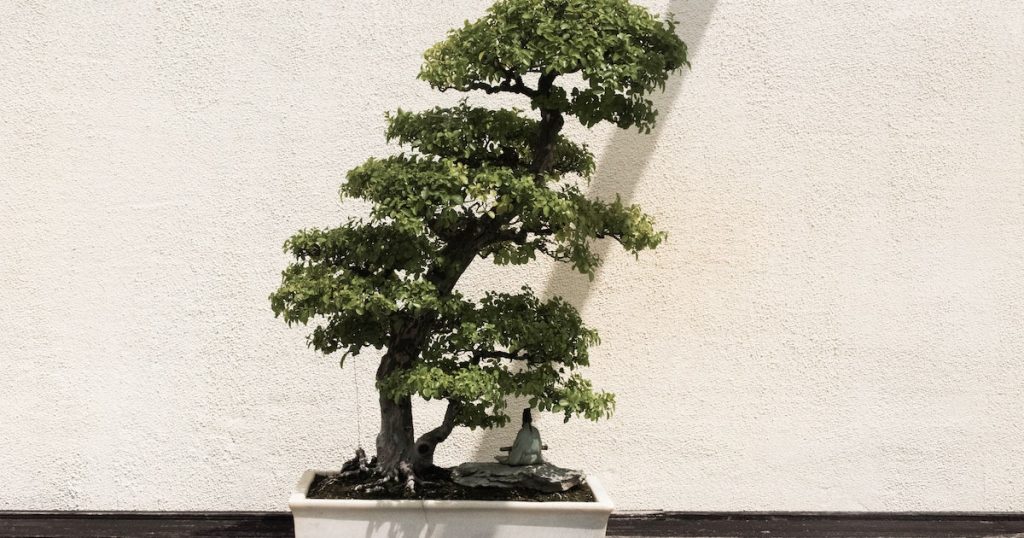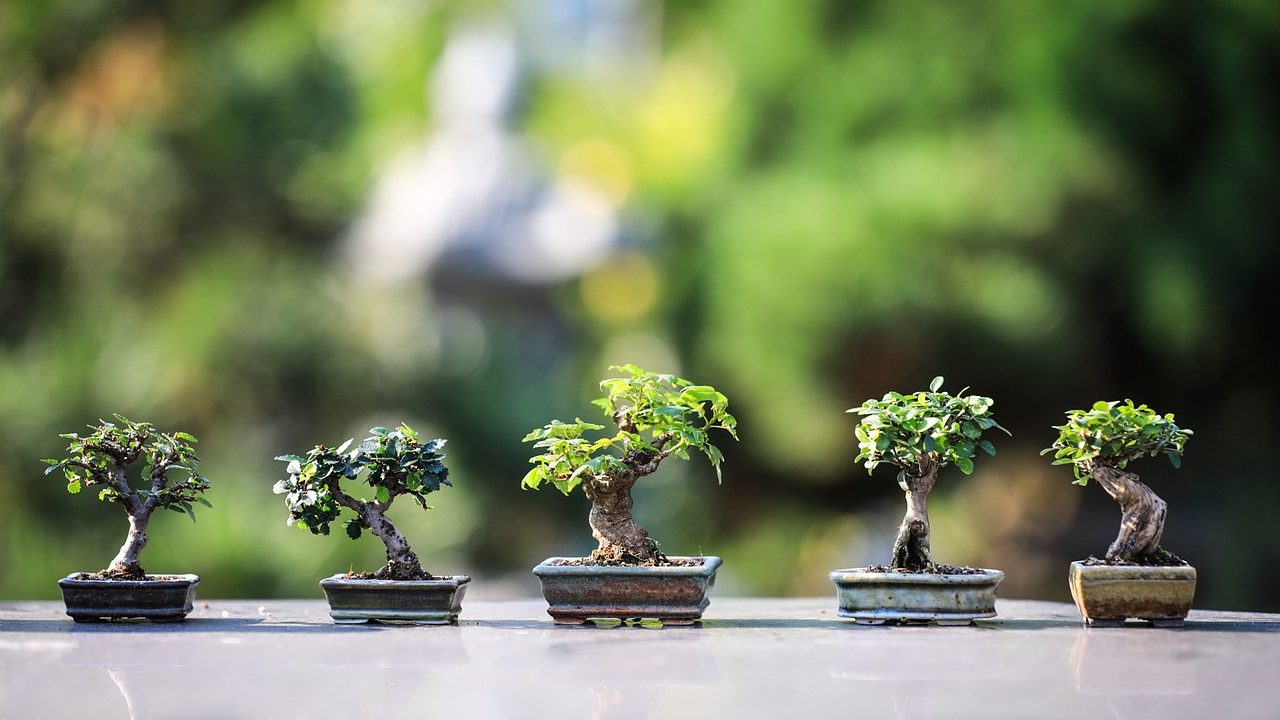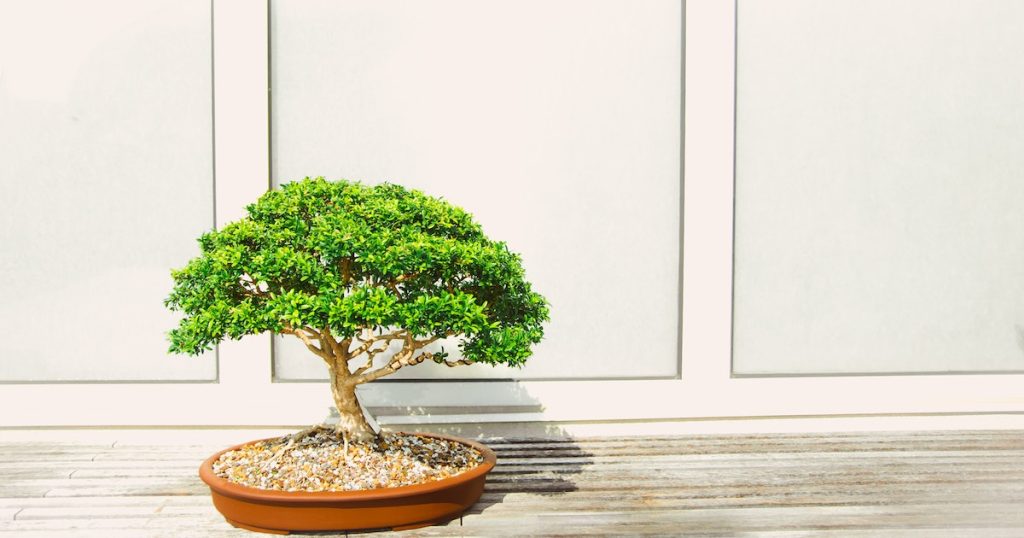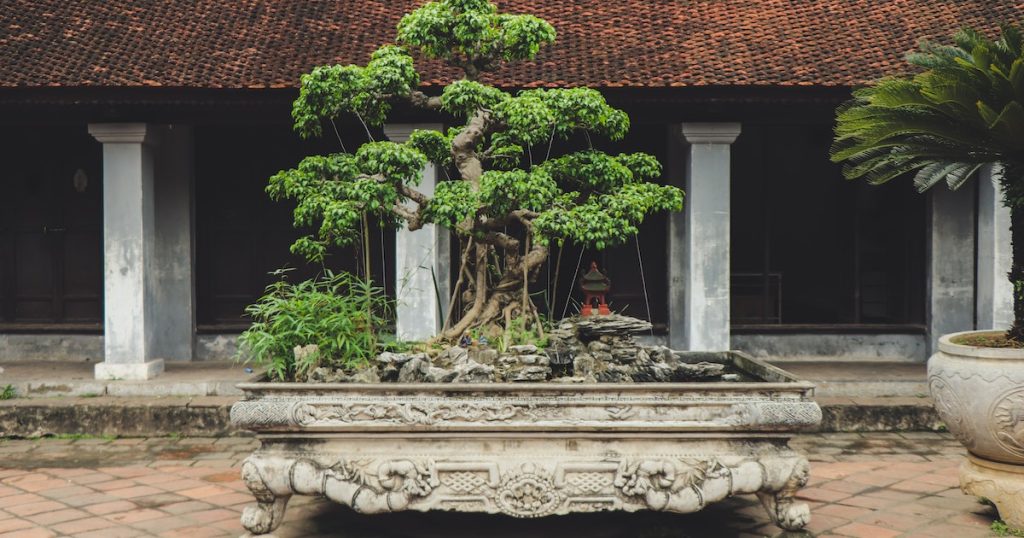It’s not difficult to maintain a bonsai tree, but there are a few precautions you must take if you don’t want your bonsai tree to become brittle or dry. Your tree will flourish if you give it lots of light, water, and fertilizer when it needs it only. However, sometimes it is hard to diagnose the problem of why your tree is so brittle even when you might be taking good care of it.
The most common reason your bonsai tree can become brittle is because of improper watering; you may be overwatering or underwatering your tree. Other causes can include soil quality, root-bound bonsai, excessive sunshine, insufficient drainage, pot choice, and temperature. All of these factors cause the tree leaves to dry out and become brittle.
If your bonsai tree has been overly dried out or brittle, it may start to feel fragile, which can lead to your tree dying out. It is important to know and diagnose the causes of why your bonsai tree is becoming so brittle so you can avoid it from dying out. You can also revive your bonsai tree if it is becoming brittle. This article teaches you how to take better care of your bonsai tree.

Table of Contents
Why Is My Bonsai Tree Brittle
A bonsai tree can become brittle if it is having problems absorbing enough water to remain healthy, and while the most common cause of this is underwatering, that is not the only reason. It can also become brittle due to other factors.
Although there are ways you can try to restore your bonsai tree’s health, it depends on the cause. To help you recognize the problem or problems that may be causing your bonsai tree to become brittle, we have compiled a list of the symptoms.
1. Underwatering
A bonsai tree that is dry and brittle is probably not getting enough water. In addition to drying out your bonsai leaves, not getting enough water over time can cause your bonsai tree to become brittle. Your bonsai has been using too little water for a long period at this point. Bonsai soil is formulated to drain rapidly and contain less water than regular gardening soil.
This trait means that bonsai trees typically require more frequent watering than typical container plants. Unexpectedly, many make the mistake of not watering sufficiently. Within days, the leaves begin to fall due to dry soil. Hard soil, dead leaves, a stunted trunk, dry roots, and no new growth are indications of underwatering.
To avoid this, check the soil of the bonsai tree every day, and if it is dry to a depth of half an inch, water the tree. It may be vital to water a plant twice a day on scorching summer days.
2. Overwatering
Contrary to popular belief, too much watering can make a tree fragile. This is why beginners make this mistake a lot; they may think that they are taking extra care of their bonsai tree. However, that is not the case. Overwatering actually causes a tree’s roots to drown and rot. We call this “root rot.”
Standing water in the soil will prevent the bonsai’s roots from getting enough oxygen to stay healthy. This enables harmful bacteria and fungi to grow on the roots, which can cause root rot. Root rot can also result from inadequate soil that prevents water from draining correctly. Roots require oxygen to function.
Without a strong root system, the tree would eventually dry out and die because it cannot absorb the water from the soil. If the soil is still wet or if only the top layer of soil has dried out, do not water the bonsai.

3. Pot Choice
Your bonsai should be housed in a container that is relatively shallow yet sufficiently wide and long to allow the tree’s roots to spread out. The size of the pot determines a lot of the internal functions of the bonsai tree.
If the pot is huge, it will clog and contaminate the water and soil. Vice versa, a smaller one will restrict the roots of the plant. It is important that you choose the right pot for your bonsai.
Allowing a tree to become root-bound can also be harmful to the bonsai roots, and smaller pots cause the tree to become root-bound. When a tree is planted, its roots spread out to freely seek out nutrients distant from the tree’s real trunk.
When cultivated in small containers, bonsai require annual or biannual root cutting to control the size of the root ball and promote the development of new, fine roots that more effectively absorb water and nutrients.
This video explains the effect of pot choice on your bonsai and how to make the right choice in choosing one:
4. Soil Quality
After prolonged use, the soil may occasionally need to be replaced. The effectiveness and nutritional worth of soil might be lost with time, or it can accumulate undesired chemicals like salt. Its inability to retain water is indicated by this.
In these kinds of circumstances, water can flow through the pot more easily by repotting your bonsai in fresh soil with some loam or perlite in a clean container. This will revive those parched leaves.
5. Insufficient Drainage
More than one drainage hole is required in your pot, especially if your bonsai is big. If you mistakenly give your tree a little too much water, more drainage holes will prevent it from drowning or from the consequences of overwatering.
For instance, if your container has just one drainage hole, the plant won’t be able to hold onto much moisture and may require more water more regularly. As too much water accumulating in the pot can result in the growth of germs and fungus, this also enables the soil and roots to breathe and remain healthy.
6. Excessive or Less Sunshine and Temperature
Too much exposure to the sun can contribute to the dehydration of your bonsai tree. The heat produced by the sun’s direct illumination on your bonsai may wind as drying out the tree’s leaves and branches. They could then feel fragile to the touch as a result.
Likewise, another obvious cause is less sunshine. We know that all plants and trees need sunshine to grow, so if there is inadequate sunshine, it can also cause your bonsai to lack protein to grow and become brittle.
The roots of bonsai are extremely sensitive to temperature changes. Growers should take precautions to avoid their bonsai becoming very cold or dry throughout the winter or summer. Similarly, in the summer, controlling the temperature is essential, as the room temperature shouldn’t be excessively hot.
7. Wrong Fertilizer Usage
Fertilizers are essential since, unlike outside plants, they don’t have access to natural fertilizers for nutrients and minerals. Although fertilizers can help in the growth of your bonsai, the wrong usage of such fertilizers can damage your bonsai roots, dry out the leaves or make them brittle.
Synthetic fertilizers such as urea, a synthetic chemical that is frequently used to replenish nitrogen in fertilizers, can harm sensitive bonsai trees growing in poor soil because of their exceptionally high nitrogen content.
Moreover, you should never fertilize a stressed-out tree. A stressed tree is one that needs to be watered, is ill, or has recently been potted (always water your tree before feeding). When repotting, give your tree at least a month to recover before reintroducing fertilizer. Over-fertilization can cause the withering of leaves.

How to Rejuvenate a Brittle and Dry Bonsai Tree
There are techniques you may try that can help give your bonsai tree a second chance, so dry and brittle leaves aren’t always a sign that the tree is dying. First, you should confirm if your bonsai tree is well by trying to restore it. The effort is worthwhile when you watch your bonsai blossom return to vibrancy.
Give Your Bonsai Tree a Water Treatment
Take your bonsai out of the pot and place it in a bowl of water to sit. Make sure there is enough water in the pot to completely submerge the soil. For five to ten minutes, allow your bonsai to soak in this water bath. Make sure the container can drain any extra water once you’ve removed the tree.
Change The Pot and Soil
Repotting your tree in fresh soil is the best technique to enhance the health of its roots. Carefully remove the tree from the old container so as not to snap its fragile parts. Look for rotten roots and extra-large, thick roots in the root ball.
Remove any rotting wood, starting with thick roots, to encourage the regrowth of little, fine roots in their stead. If there has been an issue with standing water or overwatering, get rid of as much soil as you can and replace it with something that will drain better.
Create a conventional fertilizer and nutrient soil mixture. The bonsai should be centered in the container after the first third has been filled. Make sure that you don’t compress the soil too firmly.
Place It in the Right Setting
You should make sure that your bonsai tree is in an atmosphere with the right humidity and sunlight setting. Place it where it will receive both early and afternoon shade. Additionally, the area should have sufficient airflow and a humidity level that is not too high. Make sure there are no hot vents close by, as they may hinder the tree’s capacity to recuperate.
Also, make sure to keep it away from any area you believe to be contaminated or at risk of becoming infested with bugs.

Bonsai Tree Leaves are Dry and Falling off
The brightness and color of a bonsai’s leaves begin to fade when they become dry. Ideally, you’ll notice that parts of your tree’s leaves are drying out pretty fast, so you can take immediate action to fix the problem. But if you don’t understand what’s causing the leaves on your bonsai to dry out, you can’t remedy it.
Once the bonsai tree leaves become dry, they can fall off on their own. However, sometimes these dry leaves can stay on the tree.
Is It Okay to Remove Dry or Dead Leaves?
Generally speaking, not only do dry and dead leaves have an unpleasant appearance, it’s ideal to remove any dead leaves from the tree because they can absorb crucial nutrients and water that the tree’s vital parts can utilize more effectively.
This indicates that the healthy portions of your bonsai aren’t receiving enough nutrition to remain strong. These decomposing leaves are unnecessary and should be removed. Cutting them, nevertheless, could occasionally shock a weak tree too much.
In other words, if your bonsai tree is recovering from illness, make sure to prune sparingly and only when absolutely required. Additionally, it might be beneficial to merely defoliate a small portion of the tree at first, then expand your efforts once it has recovered.
The removal of dead leaves and stems is one action you may take to restore the appearance of your bonsai if you can see that it is still alive using some of the ways mentioned above. Use some pruning shears, and make sure you move gently and cautiously. It is advisable to remove the dead leaves slowly.
For instance, remove any dead leaves that you know can’t be revived before using some of the techniques that we discussed. After a few weeks, get rid of any dead leaves that couldn’t be revived in any way.
Conclusion
We can conclude that there are many reasons which can make your bonsai tree so brittle and dry. These can include obvious reasons, such as underwatering or common neglectful mistakes, such as pot sizes or overwatering. Regardless, this doesn’t always mean that your bonsai tree has dried out. We also explained how you could restore your plant through some measures.
Recent Posts
Have you found yourself wondering, 'why is my bamboo growing so slow?' Despite the fact that bamboo plants are remarkably fast-growing, it can sometimes take months (or even years!) to see any signs...
Miracle-Gro is a huge help when you are trying to get decent yields out of your plants or if you want them to thrive. However, you may have noticed that a single dose of fertilizer does little to...
